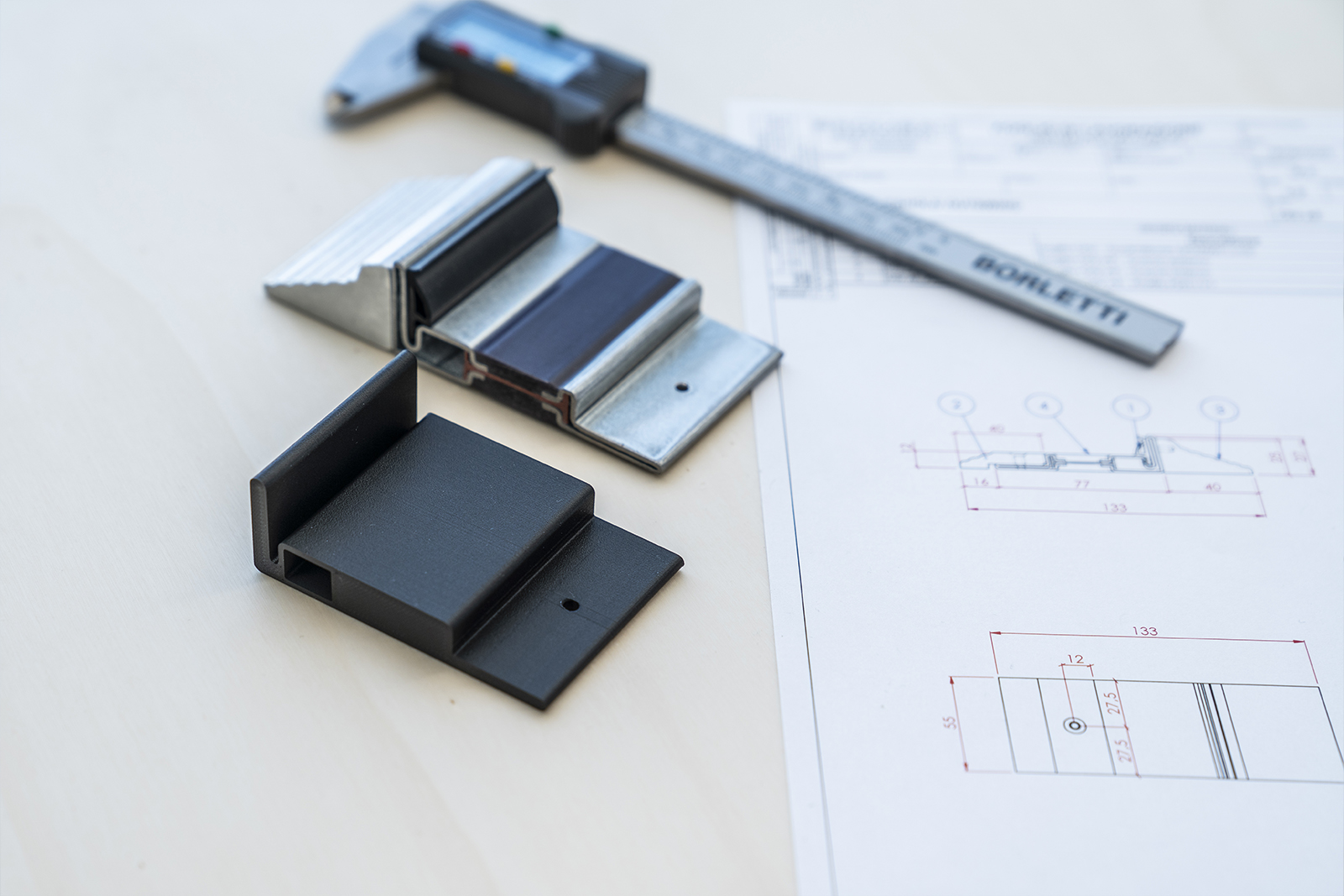3D PRINTING IN THE PRODUCTION APPLICATIONS
New frontiers of technology for business solutions.
For more than a decade, especially since the Chuck Hull patent expired in 2009, this production technique commonly called “3D Printing” has come into common use with an almost capillary diffusion and in the most diverse fields.
Also referred to as rapid prototyping, with the advent of this innovative technology, the production standards known and used up to that time, have completely changed.
The success it still enjoys even today, is given by the fact that 3D printers are faster, more reliable and definitely easier to use than previous subtractive manufacturing technologies; in addition to the matter that the creation of a small number of objects, is as cheap as a production on large scale.
Why should a company like Brombal include a 3D printer among its machinery?
Mr Matteo Erta, technical designer who is in charge for the 3D printer and its production process, answers to this question: “ A few years ago, occasionally, we started using this kind of technology, through external contractors, to create some of our prototypes. The decision to introduce this machinery and, therefore to internalise the process, came when we found out that the internal applications on products made with this technology, were constantly increasing”, explains Mr Erta, “ with the use of this new professional 3D wire printer, we have the total management of times, costs and production, in addition to the irreplaceable advantage of being able to immediately reprint a prototype just made, but with the appropriate modifications applied. In fact, management speed is one of the main advantages that made us lean forward this choice.”
3D printers use different materials depending on the final destination of application, differing in physical and mechanical properties; this specific model of superior technological level uses a composite Nylon and Carbon thread, aesthetically similar to plastic but with much greater resistance.
In order to process this thread, the extruder ( the tip of the printer) must reach 274’ Celsius required for the filament melting.
“ The shapes made with 3D printer are not reproducible by processes carried out through a cutter or prototypes in other materials”, continues Mr Erta, “ in complete freedom we can create models with the appropriate software or with the 3D printer program used routinely, we experiment, print and test until we do not achieve the desired and wanted result. Being able to fully manage the 3D printer process, from the design phase to the finished product, shortens the time required to obtain the product as intended.”
Once the 3D drawing to be produced has been loaded on the appropriate software, it is programmed or directly printed.
The extruder moving on the X and Y axes in coordination with the vertical movement of the support surface, with very high precision movements processed by the software on previously set parameters, deposits the material layer by layer thus generating the final product.
At the end of printing , the plate is extracted to remove the object;
“ Here begins the practical part of the work”, Mr Erta intervenes, “verifying the application of the prototype for the use, for which, it was created. The reasons are various, precisely due to the ductile nature of this technology: from tester product to the verification of aesthetic, from the evaluation of dimensions and spaces to the proper functional checking; in short, a 360’ degrees use, indeed 3D!” Concludes Matteo Erta with some techno-flair!
Brombal constantly seeks cutting-edge innovations to improve the quality of its products while increasing the efficiency of the manufacturing process: with the introduction of this new technological equipment a new element is added, affirming the always important research and development activity carried out in Brombal.
Take a closer look at 3D printing! Discover it in our video directly from inside the printer.
Share this article




